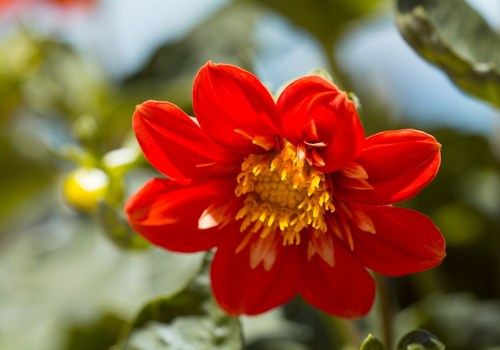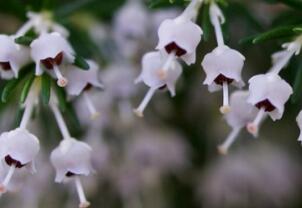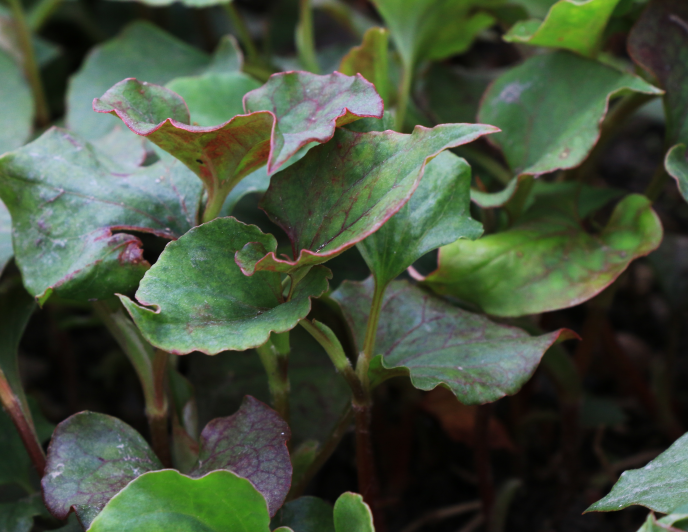Introduction to the planting method of zinnia (zinnia)! What's the difference between marigold and marigold?
Zinzincao, also known as zinzhihua, is an annual herb of Compositae. It has beautiful plant shape, large flowers, many colors and long flowering period. It can be planted in flower beds, flower borders, flower belts, flower pots and courtyards. So, how to grow zinnia? What's the difference between marigold and marigold? The following is to introduce the planting method of zinnia and the difference between zinnia and marigold.

A brief introduction to the hundred-day grass!
1. What does zinnia look like?
Zinnia generally 30-100 cm high, leaves 5-10 cm long, 2.5-5 cm wide, the shape is wide oval or oblong oval, flowers solitary at the end of the branch, single, double, flowers are crimson, rose, purple, yellow, orange, white, mixed color, etc., petals Obovate or ovate-lanceolate.
2. What is the flower language of the hundred-day grass?
There are many colors of zinnia, and the words are different if the colors are different, such as:
The flower language of the hundred-day grass is: rise step by step
The flower language of hundred-day grass (magenta) is: continuous love.
The flower phrase of zinzincao (mixed color) is: in memory of a friend who is not there.
The flower language of hundred-day grass (fir red) is: it will last forever.
The flower language of hundred-day grass (white) is: kindness
The flower language of hundred-day grass (yellow) is: daily greetings.
Second, how to grow zinnia?
1. Soil
Zinnia is strong, resistant to barren and not strict with soil, but it grows better in fertile soil with deep soil layer, loose soil and good air permeability. Rotten leaf soil, peat, perlite and river sand can be mixed into culture soil according to the ratio of 2 to 2.
2. Reproduction
Zinnia can be propagated by sowing and cutting, and sowing and propagation can be carried out from late March to late June. Before sowing, the soil and seeds are disinfected, and then the seeds are sowed or sowed on the culture soil, covered with about 1 cm of thin soil, and finally watered. Generally, it can germinate in 5-10 days. Cutting propagation can intercept long 10cm side buds for cutting, watering after cutting, generally 5-7 days will take root.
3. Temperature
The suitable temperature in the growing period is between 18-20 °C during the day and 15-16 ℃ at night. In winter, the temperature should not be too low, otherwise it will suffer frost damage, it can be moved indoors, the temperature can be controlled above 10 °C.
4. Lighting
The hundred-day grass likes the sun and is afraid of the heat, so it can be maintained in full sunshine. If the sunshine is insufficient, it is easy to lead to overgrowth of the plant and affect the flowering, but it should not be exposed to the scorching sun; if it is in winter, it can be moved to the southward balcony with good indoor light for maintenance.
5. Watering
The hundred-day grass is resistant to drought, but usually it should be watered in the right amount, not too much, otherwise the roots will rot, and it can not be too little, which will affect the normal growth of the plant. If it is in the seedling stage, the soil should not be too wet, keep 50% Mel 60% water content; if it is planted in the basin, it should be watered once to keep the basin soil slightly dry; if it is in a place with particularly strong summer light, it can be watered more appropriately; if it is in a place where there is not enough light, it is necessary to reduce watering.
6. Fertilization
The zinnia can start to be fertilized as soon as the root system grows to the bottom of the basin, fertilizing 2-3 times a week, applying water fertilizer in sunny days, grain fertilizer in rainy days, and calcium fertilizer once; in the vigorous growth period, it can be fertilized every 10 days or so, mainly with phosphorus and potash fertilizer, which promotes the plant to be strong and bloom luxuriantly.
7. Heart-picking & disease
The zinnia began to pick the heart one week after planting, in order to promote the branch, the branch picked the heart repeatedly, in order to promote the plant to be compact and dwarf. The common diseases of zinnia are white star disease, black spot disease and mosaic disease, which can be controlled by spraying.
What's the difference between zinnia and marigold?
Difference 1, different species and genera: zinnia is an annual herb of Compositae, Sunflower and Zinnia, while Calendula is a biennial herb of Compositae, Calendula and Calendula.
Difference 2, different stems and leaves: Zinnia can grow to 100cm high, the whole plant is rough or hirsute, calendula can only grow to 60cm, the whole plant is covered with white hairs; the leaves of zinnia are broadly oval or oblong-oval, and the leaves of calendula are oval or oval-Obovate.
Difference 3, the flower type is different: the flowers of zinnia have single, double, curled and wrinkled leaves, the flowers of calendula have double and curly petals, the heart of zinnia is yellow or brown, and the heart of calendula is green or dark purple.
Difference 4, the flower color is different: the flowering period of zinnia is from June to October, there are many flower colors, such as crimson, rose, yellow, orange, white, compound color, etc., the flowering period of calendula is 12-June, the flowering period is March-June, the flower color is relatively single, there are golden yellow, orange, yellow, brown.
The above is the introduction of the planting method of zinnia, which can be distinguished from Calendula by the above four methods. I hope it will be useful to you.
Time: 2019-03-13 Click:
- Prev

How does ou Shinan, known as the "queen of South African endemic species", be raised?
Photinia is a kind of flower originating from South Africa. Because of its beautiful shape, it is very popular with people. Although it does not have the elegance of orchids or the bright color of rhododendrons, clusters of flowers gather together, like strings of bells, swinging with the wind and emitting fragrance
- Next

How much is the price of Chinese herbal medicine Houttuynia cordata per jin? What are the planting prospects?
Houttuynia cordata Thunb, also known as folded ear root, is a common Chinese herbal medicine in our daily life. Because it has a wide range of uses, it can not only be used as a wild vegetable for human consumption, but also can be directly used in medicine. It is very popular with people because of its diuresis and radiation protection. Many growers want to grow it. So how much is the price of Houttuynia cordata? What are the planting prospects?
Related
- Fuxing push coffee new agricultural production and marketing class: lack of small-scale processing plants
- Jujube rice field leisure farm deep ploughing Yilan for five years to create a space for organic food and play
- Nongyu Farm-A trial of organic papaya for brave women with advanced technology
- Four points for attention in the prevention and control of diseases and insect pests of edible fungi
- How to add nutrient solution to Edible Fungi
- Is there any good way to control edible fungus mites?
- Open Inoculation Technology of Edible Fungi
- Is there any clever way to use fertilizer for edible fungus in winter?
- What agents are used to kill the pathogens of edible fungi in the mushroom shed?
- Rapid drying of Edible Fungi

